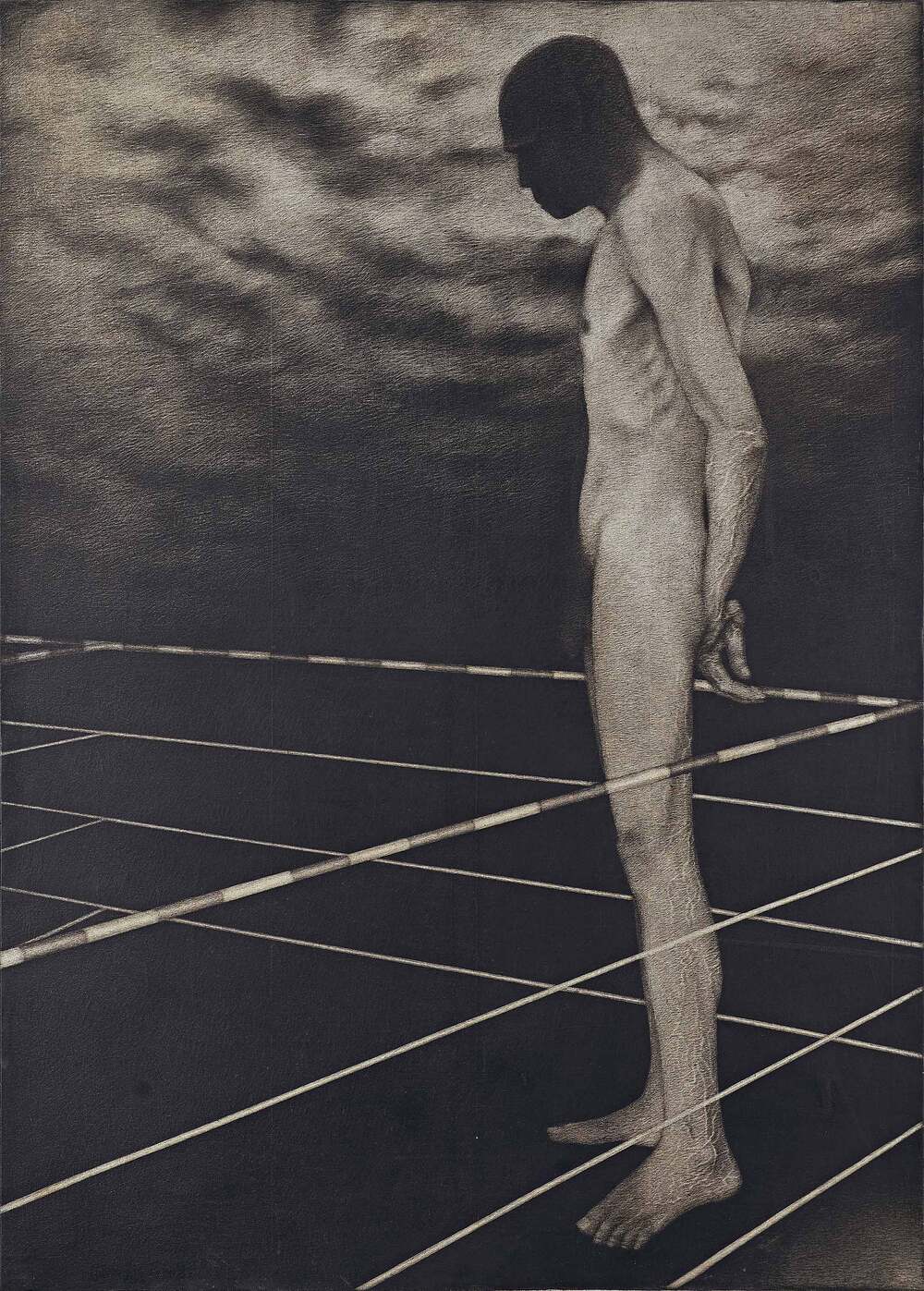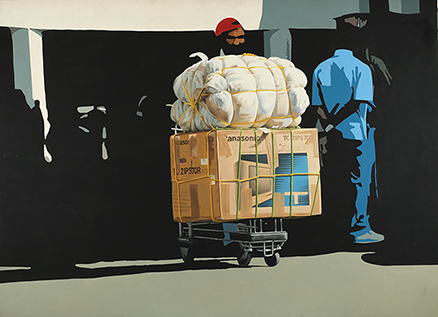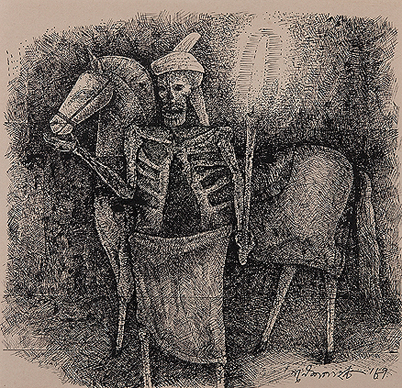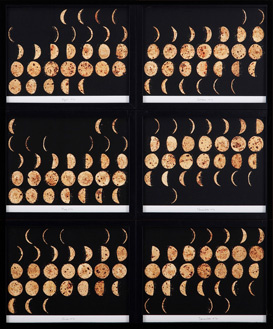India's rich culture and history has given birth to some of the most famous artists in the world. Their work reflects the spirituality of the country, its history, and the vibrant tapestry that is daily life. We explore the stories and artists behind some of the most well-known paintings by Indian artists.
1. Raja Ravi Varma - "Shakuntala"
Artist: Raja Ravi Varma
Year: 1898
Medium : Oil on Canvas
Raja Ravi Varma is considered one of the most famous Indian artists in history. His paintings are known for depicting Indian women, as well as episodes from epic texts such the Mahabharata or Ramayana. One of his most well-known works is "Shakuntala". Shakuntala is a character in the Mahabharata who pretends to remove a thorn while searching for Dushyanta. Varma's unique ability to combine European academic techniques and Indian sensibilities has made his work widely admired.
2. Amrita Shar-Gil "Three Girls"
Artist- Amrita Sher Gil
Year: 1935
Medium : Oil on Canvas
Amrita Sher Gil is often referred to as India's Frida for her unconventional and bold approach to painting. Sher-Gil shows her profound understanding of human emotion and connection to Indian subjects in "Three Girls", a powerful depiction rural women. The earthy colors and melancholic expressions capture the struggles and resilience of rural Indian woman, making this a major piece of Indian art.

Image Courtesy: https://en.wikipedia.org/wiki/Three_Girls_%28painting%29
3. M.F. Husain "Horses"
Artist: Maqbool Fida Husain (M.F. Husain)
Year: Various
Medium : Oil on Canvas
M.F. Husain is often called the Picasso of India. He had a prolific and distinctive career that combined Cubism along with traditional Indian themes. His horse paintings are some of his most well-known works. These powerful and dynamic horses are often shown in motion and represent strength and vitality. Husain’s vibrant colors and bold lines give these paintings a sense energy and life.
4. Jamini roy - "Bride and Two Companions"
Artist: Jamini Roy
Year: 1950
Medium : Tempera on Cloth
Jamini Roy, a modernist pioneer who was inspired by Bengali folk tradition, sought to create a new style. "Bride and Two Companions", a classic example of Jamini Roy's style, is characterized by his bold lines, vibrant colours, and simplified shapes. The painting shows a bride flanked with two companions. It is a great example of Roy's ability infusing traditional themes with modernist sensibility.
5. S.H. Raza - "Bindu"
Artist : Syed Haider Raza Raza)
Year: 1980
Medium : Acrylic on Canvas
S.H. The "Bindu" Series by Raza is a celebration the Indian concept bindu, which represents the point of creation in the infinite universe. The series features geometric patterns in vibrant colors that reflect Raza's philosophical and spiritual explorations. The term "Bindu" is synonymous with Raza, expressing his unique blend between Indian heritage and modernist abstract.
6. Tyeb Mehta - "Mahishasura"
Artist: Tyeb Mehta
Year: 1996
Medium : Acrylic on Canvas
Tyeb Mehta’s "Mahishasura", a powerful portrayal of the mythological demonic being slain, is an impressive depiction. The painting is noted for its bold, fragmented color scheme and stark style. This piece is a standout among contemporary Indian art because of Mehta’s unique compositional style and ability to convey strong emotions.

Image Courtesy: https://www.vadehraart.com/artists/98-tyeb-mehta/works/36229-tyeb-mehta-mahisasura-2001/
7. Rameshwar Broota - "Man Series"
Artist: Rameshwar Broota
Year: Various
Medium : Oil on Canvas
Rameshwar Broota's meticulous technique and deep thematic explorations of human existence are well known. In his "Man Series", Rameshwar Broota explores the fragility and vulnerability in the human form, which is often shown with stark monochromatic shades. Broota uses the scraping method, in which he applies paint and then scrapes it off, to add texture and depth.

Image Courtesy: https://www.astaguru.com/auctions/2023/masters-legacy-128/man---18th-8833
8. Subodh Gupta - "Saat Samundar Paar"
Artist: Subodh Gaupta
Year: 2003
Medium : Oil on Canvas
Subodh Gupta's art is renowned for its use of everyday items, which reflects the socio-economic change in India. The striking installation "Saat Samundar Paar", created with stainless steel utensils, is a stunning work. The painting version captures the essence and diaspora of global migration. It highlights Gupta’s ability to transform everyday objects into powerful statements.

Image Courtesy: https://www.saffronart.com/auctions/postwork.aspx?l=24369
9. Ganesh pyne - "The Assassin"
Artist: Ganesh Pyne
Year: 1998
Medium: Tempera on Canvas
Ganesh Pyne’s work has been described as dark, mysterious and based on mythology and folklore. The Assassin is a powerful piece that shows Pyne's mastery in tempera. This painting is a fascinating exploration of human psychology and mortality because of its intricate details and eerie atmosphere.

Image Courtesy: https://www.saffronart.com/auctions/postwork.aspx?l=9434
10. Jitish Kallat - "Epilogue"
Artist: Jitish Kallat, artist
Year: 2011
Medium : Mixed Media
Jitish Kallat’s "Epilogue", a deeply personal piece, reflects on life and death. The installation consists of a series photographs of Indian bread (rotis) which represent the phases of the moon, and symbolise his father's final meal. Kallat uses everyday objects as a way to communicate profound messages, making him one of India's most innovative artists.

Image Courtesy: https://sjmusart.org/around-table-stage-one-jitish-kallat-epilogue
The conclusion of the article is:
Indian art is a testimony to the rich culture and history of this country. These famous artists' works not only show their own journeys and philosophies, but also provide a glimpse into India's diverse and dynamic landscape. The modernist abstractions by S.H. Raza's innovative installations and Subodh Gaupta's innovative sculptures, Indian art continues captivate and inspire viewers around the globe. These masterpieces celebrate the spirit of creativity that is alive in India.













